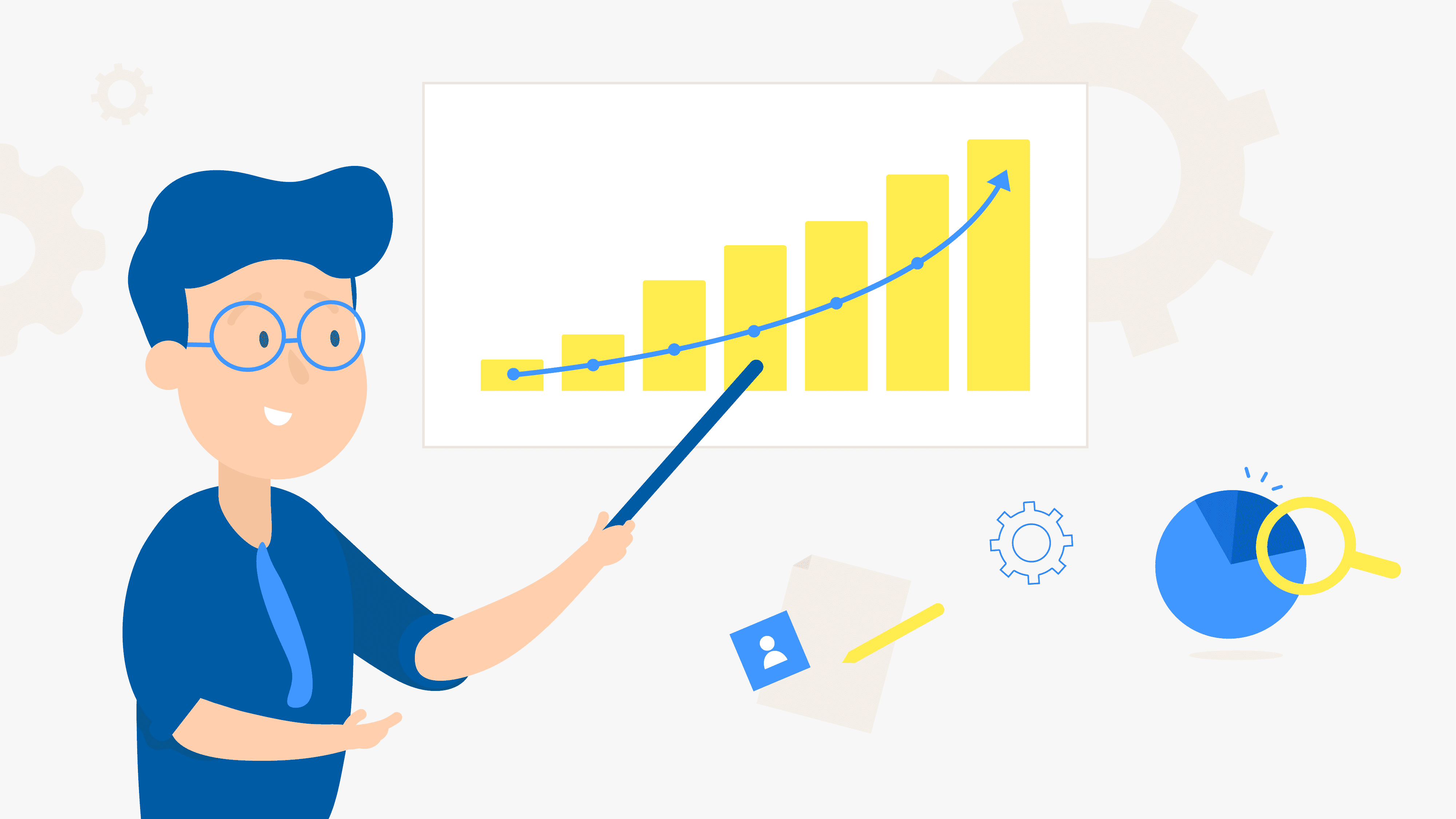HR Trends for 2021: Upskilling & Reskilling
In this article we discuss HR trends for 2021, focusing on upskilling and reskilling. It explores the importance of investing in employee development to navigate evolving workforce challenges successfully.

It is fair to say this last year has been extraordinary. It is also fair to say that these extraordinary times have forced working practices to be reimagined and remapped, quickly. We have already covered the eight foremost trends in HR in a previous article. However, with HR getting a seat at the top management table, there is one trend area that shouldn’t be overlooked: acquiring new skills to ensure operational continuity.
Why acquiring new skills is the stand out HR trend of 2021Copied
The biggest change in the business world this year, especially from an HR perspective, has been the exponential growth of working from home positions. Not only has this changed where people work, but it has also altered how people work. As we all know, the pandemic’s impact goes much further than driving office workers to their homes. It also forced businesses to reevaluate their methods and implement changes where possible to curtail the spread of the virus while struggling for survival. Even more strain was applied to industries due to restrictions imposed by governments.
There has not been a time in recent history when businesses were more reliant on a workforce that is flexible, agile, and ready to learn. Acquiring new skills through reskilling very quickly became a buzzword of 2021 since companies had to come up with creative ways to keep their business going. With the same question being raised over and over again: will fast reskilling work? It is no wonder then that acquiring new skills stands out as such a prominent HR trend for 2021.
Technology adds even more weight to the HR trend
Other forces are driving this HR trend, too. Novel technologies being one of them. It’s true that new technologies always require new employee skills. However, current developments are so advanced and are being rolled out so quickly that many are citing this period as the Fourth Industrial Revolution. This once again brings upskilling and reskilling to the top of the agenda.
New tech can only mean one thing: qualifications!Copied
The Fourth Industrial Revolution promises many things: improved sustainability, increased profit margins, and a decrease in workloads. Innovations in smart technology are making all this possible.
There is one area of business that will see an increase in their workload, though. And that’s the HR department. HR departments from all sectors will need to keep in charge of qualifications and skill sets in order to ensure business continuity and maximize growth. They will need good skills management for this, meaning they know precisely where to upskill and where to reskill.

Upskilling & reskilling: and overviewCopied
In a nutshell: upskilling and reskilling encompass skills training. Traditionally, upskilling has always been the most common practice. However, in recent years, businesses have been opting more frequently to reskill their workforce. The reason being is that new tech is changing labour patterns, which, according to the World Economic Forum, will lead to a 40% change in employees’ core skills. Reskilling, then, will be a key tool to stay fresh and ahead of your market.
Every business follows its own learning processes and develops at its own rate. So, of course, these figures are an estimation and not a hard and fast rule for all businesses. Whether your organization leans heavily on reskilling or not is entirely business-specific. It all depends on how you choose to address your skill gaps, and how much your company decides to incorporate innovative technologies into its processes. This is where your HR department comes into play. It’s also where we can help.
Is your HR department considering the latest HR trends? Copied
Due to the pandemic, HR has obtained even more visibility at the top management level. As mentioned above, each organization had to find their own recipe to quickly adapt to the new economic environment in 2020. Some companies had to lay off staff to survive, while others were able to reskill their staff to focus on the few markets that were still running during the quarantine, like medical products, cargo, or digital services.
As training and skill learning becomes more crucial for business development, the spotlight is being turned towards HR itself.
HR’s function is to manage staffing at every level and to look after the Human element of your business. A good HR department hires the best candidates, is able to retain these candidates, and ensures that both new and existing staff are happy at work. A great HR department will also maintain a strong and healthy business culture, one which is based on trust and not fears. It will also know how to incentivize your team and know when and where professional development needs to be made. While a stellar HR department will do even more.
The three golden characteristics of a stellar HR department: Copied
There are three key features that make an HR department stand out from the rest:
- An ability to communicate a strong roadmap for talent that serves future needs. A stellar HR department will look after your needs for tomorrow. It will provide advice and guidance on the areas to focus training. They will help steer you to future success.
- A strong awareness of which skills will impact and improve the business today. A stellar HR department won’t solely focus on the future. It will also know which skills need to be improved today, for today.
- Knowing when and where skills learning needs to take place. A stellar HR department will also know how to improve these skills and which learning model needs to be implemented: whether that’s upskilling or reskilling, it will know.
So, the question now is: how do you turn your HR department into a stellar one? Well, AG5 can help!
How AG5 can help maximize your potential
As AG5 Skills Management Software consolidates all skills content into one place, any skill, competency, or qualification can be found at the click of a button. The software allows you to create personal profiles to showcase the skill level of all of your employees. You can convert this data into programmed skills matrices so you have a clear overview of where potential skill gaps could emerge. What’s more, is that this data is shareable, so not only HR employees can sign in to monitor various teams. To make life even easier, all of this information can be accessed via the AG5 app.
Skills learning is certainly an important HR trend, but it’s not the only one. So, you don’t want to be bogged down by data entry or spend too much time hunting for qualifications and certificates. You want to be able to turn your head to other tasks. With AG5 you’ll be able to, as the software guarantees an 83% reduction to skills data entry time.
Don’t just take our word for it…Copied
AG5 Skills Management Software has already helped many HR departments ditch unmanageable data spread across multiple platforms. They now have a clear and comprehensible overview of their teams’ skill sets, which puts them in the best place to maximize today and plan for tomorrow.
Book a free demo to see how AG5 could help maximize your HR potential!

